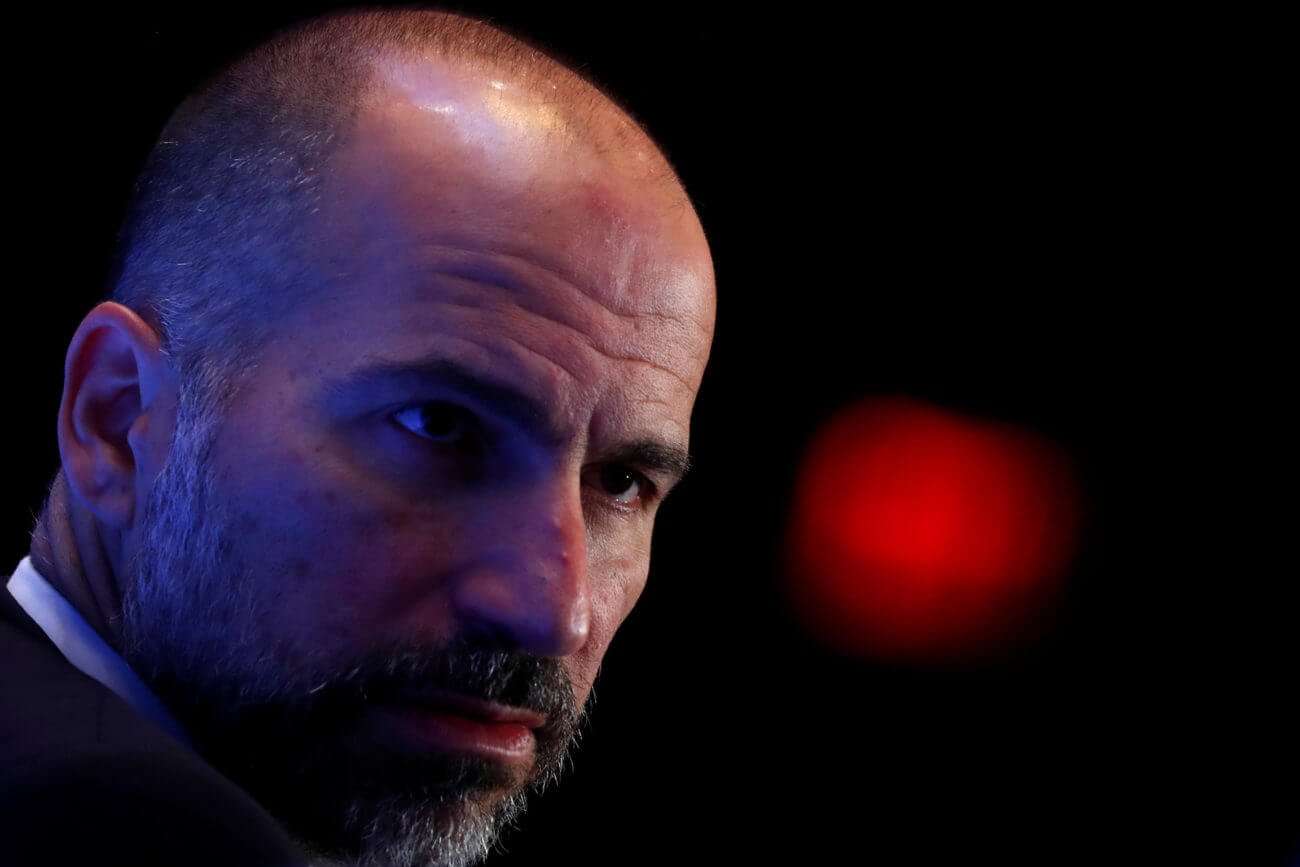
Dara Khosrowshahi took over as Uber CEO three years ago. Like his predecessor, he relies on deceptive practices in the name of revenue. | Image: REUTERS/Carlos Barria
- Dara Khosrowshahi was appointed Uber CEO in August 2017 to replace Travis Kalanick.
- The culture that evolved under Kalanick is alive and well, though.
- This week a U.S. Congressional Representative called the ride-hailing firm a “notoriously predatory company.”
Uber (NYSE: UBER) CEO Dara Khosrowshahi came in three years ago to clean up the mess caused by founder Travis Kalanick. And for some time, Uber looked like it was on the right trajectory.
The coronavirus pandemic has, however, laid bare the fact that the two men are cut from the same cloth.
Here are five things that prove Uber’s old habits are hard to discard.
Poor Treatment of Employees
COVID-19 has negatively impacted nearly every industry. Unemployment is soaring as businesses lay off their entire workforce. Some have done it humanely, but not Uber.
Last week, Uber callously fired around 3,500 employees over a three-minute Zoom call.
This is nothing new, of course. Under Kalanick, Uber’s workplace culture was described as toxic. The firm is famous for the mistreatment of drivers.
Source: Twitter
Uber also has a record of poor treatment of female employees. Former Uber engineer Susan Fowler opened the lid on sexual harassment and sexism at the ride-hailing firm in early 2017, leading to the fall of Travis Kalanick months later.
Last year, Uber paid over $4 million to settle sexual harassment and retaliation charges instituted by the U.S. Equal Employment Opportunity Commission.
Uber’s Monopolistic Instincts Haven’t Left
The coronavirus pandemic may have significantly cut demand for rides, but Khosrowshahi won’t let a crisis go to waste. Kalanick would have done the same.
Days after Uber led a $170 million investment round in micro-mobility firm Lime, it was reported that the ride-hailing giant was eyeing even more competitors.
Earlier this week, reports surfaced that Uber was interested in acquiring food delivery firm Grubhub (NYSE:GRUB).
The deal would give Uber a 56% market share in the U.S. food delivery market. Uber Eats currently has 32% of the market, while Grubhub has 24%, according to Wedbush Securities.
The chair of the U.S. House of Representatives’ antitrust subcommittee, Rep. David Cicilline, accused Uber of being a “notoriously predatory company.”
Regarding the move to acquire Grubhub at a time when restaurants have become dependent on food delivery apps, Cicilline said it marked a “new low in pandemic profiteering.”
Source: Twitter
These monopolistic instincts were evident even in the Travis Kalanick era. At one time, Uber had cornered 91% of the U.S. ride-hailing market. This had been achieved through all manner of tactics–both above-board and underhand.
To beat Lyft in the U.S., for instance, Uber employed the “SLOG program,” which involved employing teams of independent contractors to sabotage the rival. The job of these contractors was to repeatedly request Lyft rides using burner phones and then cancel them.
This had the effect of denying genuine requests an opportunity to get a ride on the rival’s platform. It also turned off drivers from working for Lyft.
Greedy and Extortionate Business Practices
Before the coronavirus pandemic, restaurants could stomach the high fees food-delivery apps charged since it was only a small slice of their business.
But with the outbreak, such high commissions are unsustainable for small businesses that depend on the apps.
Not surprisingly, Uber Eats is one of the most expensive food-delivery apps. The use of its marketplace costs restaurant a 15-30% order fee.
Source: Twitter
Just as it did in 2014 when it quadrupled fares in Sydney, Australia during a terrorist attack, Uber is exploiting the COVID-19 pandemic to extract more revenues.
Sacrificing Values and Principles
Some Travis Kalanick-like traits in Khosrowshahi were evident even before the coronavirus pandemic hit.
Last year, Khosrowshahi said the killing of Washington Post journalist and Saudi critic Jamal Khashoggi was a mistake comparable to Uber’s missteps with self-driving cars.
Source: Twitter
Khosrowshahi’s statement was interpreted as an attempt to avoid antagonizing Saudi Arabia, whose sovereign wealth fund holds a 5.3% stake in Uber.
Under Kalanick, there were numerous instances where corporate interests prevailed over values and principles. This included a 2016 cyberattack that compromised personal data belonging to 50 million riders and seven million drivers.
The ex-Uber CEO was informed just a month after the incident. But rather than be transparent about it, Uber paid hackers $100,000 to cover up the security breach.
Source: Twitter
The breach only became public a year later, in yet another instance of corporate interests overriding integrity.
Kalanick’s Culture of Circumventing the Law Continues
When Kalanick was CEO, Uber became synonymous with practices aimed at skirting the law. To deceive law enforcement officials in places where the service violated regulations, for instance, Uber employed the Greyball tool.
The Greyball software identified officials working in such jurisdictions and denied them rides to prevent sting operations.
The tool was used in countries around the world and cities such as Boston, Las Vegas, Philadelphia, and Portland.
Source: Twitter
Under Khosrowshahi, these sorts of practices have continued.
Exhibit one: Earlier in the year, Uber introduced new features on its app aimed at circumventing the gig workers’ law in California.
Source: Twitter
After Kalanick’s ouster, some Uber employees petitioned the company’s board of directors to reinstate him. With the same ethos at the helm currently, what’s there to miss?
As for those who sighed with relief at Kalanick’s exit, here’s the bad news–the nightmare never really ended.
Disclaimer: This article represents the author’s opinion and should not be considered investment advice from CCN.com. The author holds no investment position in Uber at the time of writing.
This article was edited by Sam Bourgi.
Last modified: May 16, 2020 3:05 PM UTC






